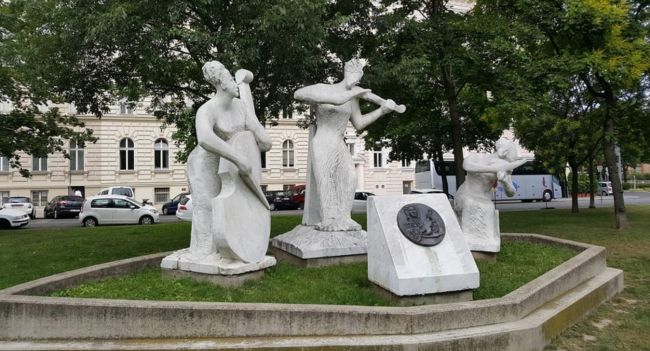Yes, because the Rossi‘s son (Rossi literally translates as “the Reds”), so nicknamed for their haircolour, had to reckon with “chest tightness” from an early age: an implacable asthma. This is the end of the 1600s and science can do little against the condition, so his parents turn to faith, with a quick christening and vows that, although they have no therapeutic effect, will have a real influence on their son’s future.
Little Antonio tires easily; walking wears him out, let alone playing. But he is lively, curious. So, he finds his own personal spaces for escapism: he reads a lot, especially religious texts, and, most importantly, he discovers music. That one he can breathe in freely and easily at home!
His father Giovanni Battista is a barber, but everyone in Venice knows him as a skilled violinist. He was probably responsible for placing his first violin in Antonio’s arms and introducing him at an early age to the elite musicians of the Doge’s Chapel, where the famous Giovanni Legrenzi also taught. Pure oxygen for the young Vivaldi, who learns, studies, thrives.
His interest in music and in mysticism grow hand in hand: Antonio takes his vows. The two careers never conflict, indeed one day, during mass, the “Red Priest” is seized by an inspiration so strong that he leaves altar and congregation and rushes to the sacristy to jot down a musical idea. Shortly afterwards, his “hunger for air” forces him to stop celebrating mass, but it will never drive him away from either the Church or music.
The year 1703 is a turning point. At the age of twenty-five, he becomes a priest and, five months later, he is hired as violin teacher at the Ospedale della Pietà in Venice, with the task, among other things, of teaching music to young girls. The training of his pupils becomes legendary: “The exceptional music is that of the Ospedale, where girls sing like angels and play the violin, the organ, the oboe, the cello, the bassoon; in short, there is no instrument that frightens them,” wrote philosopher Charles de Brosses after a concert. And with these prodigious “instruments” at his disposal, his creativity breaks out.
Around this time, Vivaldi writes most of his works and publishes his first collections, composing for the Ospedale della Pietà girls concertos, cantatas and sacred music, true hits that marked the style of the era with their engaging rhythm, intensely expressive melodies and a spectacular virtuosity never heard or imagined before.
For the orchestra of the Pietà he composes numerous concertos and performs on the violin himself, enhancing each piece with a remarkable stage presence, but above all with music that seems to come straight from the depths of the human soul. From this period are “The Four Seasons”, his most iconic work, where he manages to depict in music nothing less than the immensity of nature.
Success as a composer of instrumental music does not quench his need to write, rather it fuels it. He discovers the theatre, at that time the most popular form of entertainment, and there he achieves something extraordinary: he, a man of humble origins, brings the common people closer to music. His fame is now comparable to that of a Hollywood star of the 1950s; it also draws gossip, such as the one alleging a fling with “Annina del Prete Rosso”, his protégé.
But fame is scornful and cruel, it can fade as quickly as it came. A few decades later, forgotten by the Italian public, tired and worn out by such an intense life, he moves to Vienna as a composer to the Imperial Court. But everything goes awry: the Emperor Charles VI dies unexpectedly and Vivaldi finds himself without a patron, poor and alone, forced to sell his compositions for very little money. On July 28, 1741 he dies at the age of 63, bidding farewell to the world with a silence that clashes with the thunderousness of his birth and the melodious enchantment of his career.
However, this was but a pause between the first and second acts in the artistic existence of a Maestro who was able to enchant, subvert and inspire like few others. The 20th century has given Antonio Vivaldi back the place he deserves: a beacon in the history of music, a genius who could translate beauty itself into notes, so that we could all make it our own.
Today, his work and his intent still guide us: that is why Accademia Bizantina chose the Concerto in B Minor, Op.3 No.10, RV 580: I. Allegro from the Estro Armonico collection as the soundtrack to the cultural project The Exciting Sound Of Baroque Music, with which we wish to take our music out of the theatres, into the online and offline spaces of everyday life where it can once again move and inspire all people.
